Credits
- Filmmakers for the Prosecution
- NUREMBERG: Its Lesson for Today—ORIGINAL 1948 FILM
- NUREMBERG: Its Lesson for Today—RESTORATION
KINO LORBER presents FILMMAKERS FOR THE PROSECUTION with
Victor Barbat
Yves Beigbeder
Axel Fischer
Niklas Frank
Stuart Liebman
Sylvie Lindeperg
Eli Rosenbaum
Alexander Zöller
Cinematography
Alberto Marquardt
Olivier Raffet
Nancy Schreiber
Sound Recording
Marc Soupa
Laure-Alice Hervé
Narrator
Jessica DiSalvo
Voiceovers
KC Schulberg
Benn Schulberg
Produced by
ARTE & Zadig Productions & KG Productions & Schulberg Productions / in association with Historic TV and Fondation pour la Mémoire de la Shoah / ARTE Commissioning
Editors
Fabrice Puchault
Karen Michael
Written & Directed by
Jean-Christophe Klotz
Adapted from
Sandra Schulberg’s article “Filmmakers for the Prosecution”
Consultants
Written & Directed by
Edited by
Production Supervisor
Musical Score by
Restoration Executive Producer
Narrator
Senior Archival Researcher
Score Reconstruction
Sound Editor
Re-Recording Mixer
Casting Consultant
Production Assistant
Restoration Production Companies
Schulberg Productions & Metropolis Productions
Scroll through the section above and click the names to see detailed biographical information.
Stuart SchulbergWriter/Director/Producer
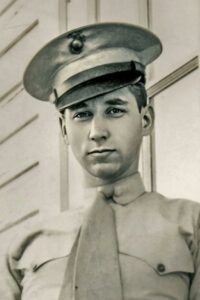
Stuart Schulberg dropped out of the University of Chicago, where he had been majoring in journalism, to enlist in the Marine Corps after the attack on Pearl Harbor. He was assigned to the Office of Strategic Services (OSS) to make secret training films for the OSS.
The OSS Field Photographic Branch, based in Washington, DC, was headed by Hollywood director John Ford. In the summer of 1945, Ford dispatched Stuart to Europe to hunt for Nazi films that could be used at the Nuremberg trial. His older brother Budd, of higher rank, followed and led what became a small team of editors and writers. During a frenzied 4-month period, the Schulberg brothers and their colleagues scoured the German-occupied territories for footage. The films and photos they presented in the courtroom played a role in convicting the Nazis on trial.
Subsequently, Stuart Schulberg wrote and directed NUREMBERG: Its Lesson for Today, the official documentary about the trial. After Nuremberg was completed in 1948, Stuart Schulberg produced denazification and re-education films aimed at German audiences in his role as chief of U.S. Military Government’s Documentary Film Unit in Berlin.
At the end of 1949, he was recruited to head the Marshall Plan Motion Picture Section in Paris, and served as its chief from 1950 to 1952. From 1952 through 1956, Stuart and his French partner, Gilbert de Goldschmidt, produced three commercial movies that addressed democratization and cultural tolerance issues within Germany, and between Germany and France. Starring well-known actors such as Joseph Cotten, these movies – No Way Back (Weg Ohne Umkehr), Double Destiny (Das Zweites Leben), and Embassy Baby (Von Himmel Gefallen) – were financed in part with covert U.S. government monies.
At the end of 1956, Stuart moved his family to the United States, in order to collaborate with his brother Budd on a movie for Warner Brothers, Wind Across the Everglades, starring Christpher Plummer, Burl Ives, Gypsy Rose Lee, and, in his first movie role, Peter Falk. One of the first films to tackle environmental issues, it dealt with the illegal killing of endangered species – the plume birds that used to adorn women’s hats at the turn of the century.
Thereafter, Stuart returned to his true passion, documentary films. In 1961, he was named co-producer of David Brinkley’s Journal, the first television news magazine, for which he won several all of the major awards in broadcast journalism, including the Emmy Award. As a result of its critical and popular success, he was named NBC’s Senior Documentary Producer, producing many of the important and award-winning network news specials of the 1960’s, with NBC’s top journalists David Brinkley, John Chancellor, Ed Newman, Robin McNeil, Sandy Vinocur, and others. In 1969, he was made producer of NBC’s fabled Today program,a position he used to expand the program’s domestic and international news coverage.
Stuart collaborated several more times with his brother Budd – on the television dramatization of Budd’s novel What Makes Sammy Run?; on the Broadway musical of Sammy; and on From The Ashes: The Angry Voices of Watts, a television special featuring the works of African-American writers who had emerged from the Watts Writers Workshop Budd founded in Los Angeles after the Watts uprising.
Stuart Schulberg died in 1979, aged 56, while producing his last major NBC special.
Sandra SchulbergCo-Creator/Producer

Sandra Schulberg is an accomplished producer, specialized in international film finance. She spent seven years in Europe as a senior executive for American Playhouse/ Playhouse International Pictures, charged with securing European and Japanese financing for American independent films and TV dramas. She helped to finance and market more than a dozen Playhouse movies, including I Shot Andy Warhol, Angels & Insects, Amateur, Safe, Daughters of the Dust, Thank You and Good Night, and Julie Taymor’s first film, Fool’s Fire, and served as executive producer of Roosters and Shimmer.
For three years after that, she managed film investment for Hollywood Partners, one of the private German media funds, providing financing and serving as executive producer for the Oscar-nominated Quills, starring Geoffrey Rush and Kate Winslet; Undisputed, starring Wesley Snipes and Ving Rhames; The Last Yellow starring Samantha Morton; and Adrienne Shelly’s first feature, I’ll Take You There, among others.
Under her own banner, she produced John Hanson’s Wildrose, Jill Godmilow’s Waiting for the Moon (Sundance Grand Prize-winner); line produced Glen Pitre’s Belizaire the Cajun; and co-produced Ann Hu’s Shadow Magic, among others. She also helped to raise finishing funds for Barbara Kopple’s non-fiction feature, My Generation.
For producer Mike Hausman, she worked as production manager of Marco Ferreri’s Bye Bye Monkey, starring Gerard Depardieu and Marcello Mastroianni, winner of the Cannes Jury Prize. She was associate producer of the first two Cannes Camera d’Or winners, Alambrista and Northern Lights, and handled foreign sales for those films. Her latest movie, Exposed by Beth B, premiered at the 2013 Berlin Film Festival and is currently in U.S. release.
A longtime advocate of independent filmmakers, she founded the Independent Feature Project and IFP Market; co-founded First Run Features; served as one of the first nominators to the Sundance Filmmakers Lab, and, for five years, as a member of the Sundance Film Festival Advisory Committee. She helped lobby CPB for funding that resulted in ITVS, and served on the ITVS board during its creation of LinkTV, a world affairs satellite channel.
In 2003, she began a large-scale effort to preserve and exhibit the films of the Marshall Plan, and, with the support of the Academy Film Archive (AFA), created a 25-film retrospective, Selling Democracy: Films of the Marshall Plan, 1948-1953, that has been touring U.S. and European cities since 2004. She is currently in production on a Marshall Plan film DVD collection, which will include interviews with surviving Marshall Plan filmmakers, and a companion book. To learn more about the Marshall Plan films, visit www.sellingdemocracy.org.
In the spring of 2006, Schulberg received a grant from the Righteous Persons Foundation to research and write a book with her uncle, Budd Schulberg, about the hunt for Nazi film and photo evidence that was used at the Nuremberg trial. Based on newly uncovered family letters and documents, the book is entitled The Celluloid Noose. In 2009, she completed (with Josh Waletzky) the restoration of Nuremberg: Its Lesson for Today.
An Adjunct Assistant Professor at Columbia University, she teaches Feature Film Financing and International Co-Production in the graduate film school, as well as film financing tutorials around the country.
In 1994, she received a Spirit Award for her contributions to American independent cinema. Born in Paris, she is fluent in French, Spanish and German. Her BA (in Anthropology) is from Swarthmore College, and she has done post-graduate studies in Public Diplomacy at the University of Southern California.
She can be contacted at sandra.schulberg@gmail.com.
Josh WaletzkyCo-Creator/Sound Design

Josh Waletzky is a documentary film director, editor, and writer, currently directing Parting the Waters, a film about swimming and racial segregation in the U.S. He began his career as the sound editor of the seminal documentary Harlan County, USA. His extensive body of work includes Academy Award-nominated Music for the Movies: Bernard Herrmann; Image Before My Eyes; Partisans of Vilna; and Sacred Stage: The Mariinksky Theater. Josh’s work has garnered Academy Awards, Peabody and Emmy Awards, and an ACE-Eddy Award nomination for his editing. Josh is also a force in the world of klezmer music, with a Grammy Award nomination for Partisans of Vilna:The Songs of World War II Jewish Resistance and a CD of his original Yiddish song cycle, Crossing the Shadows.
Liev SchreiberNarrator
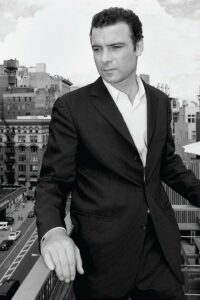
Widely considered one of the finest actors of his generation, Liev Schreiber’s repertoire of resonant, humanistic and offen gritty portrayals has garnered the actor the strongest praise in film, theatre and television.
His most recent choices only continue this path. Schreiber gave an unforgettable performance in Ang Lee’s Taking Woodstock, as the transvestite security guard, Vilma. Before that, he starred opposite Daniel Craig and Jamie Bell in Defiance, a World War II-era drama directed by Edward Zwick. The three actors star as Jewish brothers who escape from Nazi-occupied Poland to the forests of Belarus to join the resistance and endeavor to build a village in order to protect themselves and others in danger. Schreiber starred in X-Men Origins: Wolverine as Victor Creed, the beastly nemesis of Wolverine, a role revisited by Hugh Jackman. In this prequel to the hit X-Men trilogy, Jackman’s Wolverine is keen on seeking revenge against Creed (who is secretly the mutant Sabretooth) for killing his love. With a screenplay by David Benioff, Wolverine was directed by Gavin Hood.
Showing his versatility in period adaptations, he appeared in Mike Newell’s Love in the Time of Cholera (2007), alongside Benjamin Bratt and Javier Bardem, and in The Painted Veil (2006), with Edward Norton and Naomi Watts. Schreiber has also starred alongside Meryl Streep and Denzel Washington in The Manchurian Candidate, with Julia Stiles in The Omen, with Ben Affleck in The Sum of All Fears, and with Hugh Jackman in Kate & Leopold.
Utilizing his theatre and Shakespearean background, Schreiber starred as Laertes in Hamlet, across from Ethan Hawke. Schreiber also starred in The Hurricane, the acclaimed biopic starring Denzel Washington, as well as opposite Diane Lane and Viggo Mortensen in A Walk on the Moon.
Schreiber is an accomplished stage actor. His portrayal of Ricky Roma in the 2005 Broadway revival of David Mamet’s Glengarry Glen Ross earned Schreiber a Tony Award. In the summer of 2006, Schreiber returned to the stage in the Public Theater’s production of Macbeth opposite Jennifer Ehle, directed by Moises Kaufman, which was performed at the the Delacorte Theater in Central Park. In early 2007, Schreiber returned to Broadway to star in Eric Bogosian’s Talk Radio, which opened at the Longacre Theater. Schreiber was nominated for his second Tony for his portrayal of radio host Barry Champlain.
Schreiber has put his deft technique to work in television, making a name for himself with his portrayal of Orson Welles in RKO 281, and in the emotional Lackawanna Blues, both for HBO.
Schreiber’s expressive voice is showcased in his voiceover and narration work for prominent pieces on HBO and PBS. One of America’s foremost narrators, Schreiber has lent his voice to sports documentaries such as Mantle, :03 Seconds to Gold, and A City on Fire: The Story of the ’68 Detroit Tigers, as well as the PBS documentary series NOVA and Nature.
In 2005, Schreiber made his directorial debut with Everything is Illuminated, adapted from Jonathan Safran Foer’s bestselling novel of the same name. Prior to publication of the novel, Schreiber read an excerpt in The New Yorker, secured the rights himself, wrote the screenplay and subsequently brought the project to Warner. The film, starring Elijah Wood, was recognized by the 2006 National Film Board as one of the top ten films of the year.
Leon ConstantinerExecutive Producer
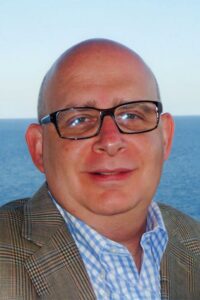
Leon Constantiner was born and raised in Mexico City.Both his parents — Dr. Jaime Constantiner and Dr. Joan Sourasky Constantiner — were philanthropists and crusaders for Jewish causes and education. Staying true to his family’s long tradition of philanthropy has been important to Leon; he is a committed supporter of the arts, culture and education, as well as a prominent collector of photography.
At the Tel Aviv Museum of Art, he established the Constantiner Photography Award, which is given annually to an Israeli photographer. He also actively supports the Museum’s photography holdings through donations, and by loaning works from his collection. At New York University’s Tisch School of the Arts, within the Photography department, he created the Leon and Michaela Constantiner New York Project Fellowship. He has also made important donations to the Metropolitan Museum of Art and the Museum of the City of New York. He is a devoted supporter of many other cultural institutions, including the Museum of Modern Art, the Metropolitan Museum of Art, Manhattan Theatre Club, the New York Philharmonic, and Carnegie Hall.
Leon’s passion for photography extends to moving pictures. He produced two features, Intimacy and Angel of Fire, and two shorts, Jump and Ivan the Very Terrible. His movies have been showcased in numerous film festivals, including Cannes, San Sebastian, Tokyo, London, Jerusalem, Cuba, San Francisco, Chicago, and New York, among others. In Israel, Leon and his wife established two important awards that are bestowed annually at the closing of the Jerusalem Film Festival: the Lia Van Leer Award for a film that deals with a Jewish theme, and the Avner Shalev Award at Yad V’shem for an outstanding film that deals with the Holocaust.
With his late father and brothers, Leon established the Joan Sourasky-Constantiner Holocaust Multimedia Research Center at the Jerusalem Cinematheque; and in New York, they endowed the Joan S. Constantiner Jewish and Holocaust Film Fund at the Film Forum cinema. In 2002, the Constantiner brothers endowed the Jaime and Joan Constantiner School Of Education at Tel Aviv University.
Leon is fluent in Spanish and English and has a working knowledge of Hebrew. He holds a degree in Communications with a major in advertising from Anáhuac University in Mexico City. In 1989 he moved to New York City, where he currently resides with his wife and two children.
Elisabeth HartjensDuplication of Trial Recordings & Senior Archival Researcher

Elisabeth M. Hartjens is an award-winning, bilingual (German & English) independent archival film, photo and audio researcher with an academic background in political science and art history. For more than 25 years she has accessed material in Washington, DC, as well as collections all over the world. She has contributed research to many television documentaries, feature length films, audio productions and museum installations, for American and European audiences.
Her TV credits include documentaries related to WW II such as the PBS series, The War, by Ken Burns, Apocalypse by CC&C (Paris) for France2 and the Smithsonian Channel, as well as many documentaries for the two German public television networks, ZDF and ARD. Other recent work includes A Class Apart for American Experience (PBS), Ahmet Ertegun for American Masters (PBS), Das Maedchen und das Photo (ARD), and a project on the legacy of the Navajo Code Talkers. Theatrical releases include Trumbo (2008), Lincoln’s Last Day (2008), Fraulein Stinnes faehrt um die Welt (2009), and a German-Austrian co-production on WW I, Death at Dawn: The Emperor’s Last Battleship (2008).
Her audio production credits include Die NS-Fuehrung im Verhoer, an eight-part radio series of original sound documents of the main Nuremberg trial. She has also contributed visual material for museum installations at the US Marine Corps Museum, Quantico, VA.
Awards:
- 2009: Individual Emmy for Research on the Emmy award-winning documentary “Women of Tibet – A Quiet Revolution” (PBS and film festivals).
- 2000: Hugo-Junkers-Preis for the TV documentary “75 Jahre Flughafen Berlin Tempelhof” (ZDF).
John CalifraScore Reconstruction

John Califra is a New York-based composer for film and television. His film credits include scores for Keiko Ibi’s Oscar winner, The Personals, Jonathan Caouette’s acclaimed Tarnation, Oscar-nominated director Anthony Lover’s My Brother, which starred Vanessa L. Williams, and Lee Grant’s Once Upon a Time in Hollywood.
His film scores have received unusual critical attention from the The New Yorker, The Jaman Lounge, Variety, the London Times, and New York Times‘ critics Matt Zoller Seitz and Jeanette Catsoulis have respectively described Califra’s film music as “moving“ and “uncommonly stirring.“
His music has been performed and recorded by the San Diego Symphony, Angel City Studio Orchestra, Czech Philharmonic, Czech Philharmonic Chamber Orchestra and Philharmonia Bulgarica.
He has composed music for events such as New York City’s Times Square millennium celebration. Recently, he composed the symphonic theme for Major League Baseball’s “World Baseball Classic“ and conducted an orchestral performance of that music at Dodger Stadium as the opening ceremony of that series‘ championship game between Korea and Japan.
For Nuremberg, Califra took on the almost impossible challenge of reconstructing those portions of the original score that underlay the original narration. Because the original music tracks had been lost, a new separate music track had to be created. To guide him, Califra had only his trained ears and a single page of thematic sketches by the original composer, Hans-Otto Borgmann, that Sandra Schulberg had found in her father’s files.
Califra’s process involved careful, attentive listening to the barely audible music track – which was buried under the film’s naration and SFX tracks. He then reconstructed the hidden score’s thematic structure, harmonic design, counterpoint and orchestration. This reconstructed score was rebuilt using a computer based music system. The electronic performance of the instrumental parts – each reproducing a single instrument of the original orchestral score – followed the shifting dynamic and tempo design of the original. The new orchestral simulation was recorded in mono and in relatively low audio resolution to capture the quality of the original.
Once he had synthesized music to cover the holes in the music, Josh Waletzky, himself a composer, spliced them to the original music. In the final sound mix, sound artifacts (distortion and noise) were added so that the new cues would sound like the music that had been recorded in 1948.
For further information about John Califra’s music: www.johncalifra.com
He can be contacted at +1 212 725 5506 or by email at califra@gmail.com.
Marco SwadosMusic Consultant
Jonathan BrielleMusic Consultant
Whether on Broadway teaching his songs to the legendary Jessica Tandy in Foxfire; writing the musical themes for Ford Motors; writing music and lyrics for Ringling Brothers, Barnum & Bailey Circus; performing for 5,000 Avon Ladies in Atlanta; producing the opening number for the MTV Music Awards (25 male Rockettes in drag and featuring Roseanne Barr); co-producing and creating the original score for the US and UK tours of Goosebumps; playing James Joyce at the James Joyce Center in Dublin; or creating one of the longest running spectaculars in Las Vegas at the legendary Stardust Hotel, Jonathan has spent his life pursuing musical story telling.
He is currently collaborating with Gil Cates to prepare for the world premiere of his original musical Nightmare Alley, April 2010 at the Geffen Playhouse in Los Angeles California.
Brielle continues to work on behalf of other writers as well having served as the National Project Director of the Songwriters Guild of America and as a Writer Advisory Board Member of ASCAP. He serves as a board member of The Johnny Mercer Foundation, which is celebrating the 100th anniversary of his birth this year.
John BowenSound Editor
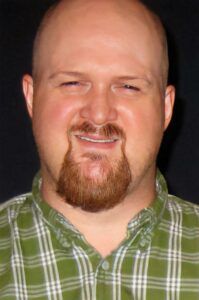
John was born in Minneapolis, Minnesota in 1967, and lived in Seattle, Washington, and Brookline, Massachusetts, before settling in New York City in 1989.
He attended Berklee College of Music from 1985-1989 and graduated Magna Cum Laude with a Bachelor of Music Degree. During this period he wrote music extensively for Boston area theatrical productions and composed two original musicals.
Since 1989 John has worked for Sync Sound in New York City. He has specialized in mixing and editing sound for film and television, with concentrations in animation, reality TV, documentaries, and classical music. Credits include: MTV animation (Beavis & Butt-head, Daria, Celebrity Deathmatch), HBO (Real Sex, various documentaries) and The Metropolitan Opera (for PBS/Great Performances and home video). A relatively complete list of credits can be found at IMDB.
In addition to his work in the sound and music fields, John has recently earned his J.D. from Brooklyn Law School.
Re Nuremberg, he writes: “One challenge on the Nuremberg project was to keep Liev Schreiber’s narration sounding close to that of the original film (without sacrificing quality and intelligibility). To accomplish this, we recorded the narration with a period ribbon microphone (RCA 44BX), alongside a modern condenser microphone (Neumann U-87). Both microphones were blended in the final mix to achieve a unique tone well suited to the feeling of the film.”
Ken HahnRe-Recording Mixer

Ken Hahn is co-owner of Sync Sound, Inc., a New York City audio post-production facility, which he founded with partner Bill Marino in 1984. Together they opened the film mixing facility Digital Cinema, LLC. in 1997.
Ken has 25 years of experience in audio post and has received two Cinema Audio Society Outstanding Achievement in Sound Mixing Awards, five Emmy Awards, 13 ITS Monitor Awards, a Mix Magazine Tec Award for Best Audio Post Production Mixer and has engineered several Grammy Award winning albums. He has written articles for many industry magazines and appears as a moderator, panelist and speaker on industry topics.
Ken specializes in mixing for television, film, home video, CD and DVD, in Stereo, Dolby Surround and 5.1. His recent credits include: HBO’s Alzheimer’s Project, Great Performances at the Met, American Masters, Alive Day Memories, David Grubin’s The Jewish Americans, and the 2009 restoration of Nuremberg: Its Lesson for Today.
Jenny LevisonCasting Consultant
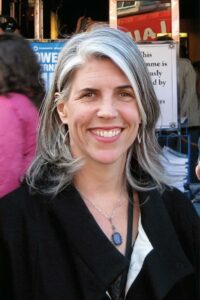
Jenny Levison was instrumental in the selection of Liev Schreiber, the actor who was engaged to record the narration for the 2009 restoration of Nuremberg: Its Lesson for Today.
She also created a transcript of the unrestored version, comparing it to the final 1948 recording script. The resulting template was used by Sandra Schulberg and Josh Waletzky, to identify those sections where live sound and subtitles would be used instead of the original narration.
Jenny Levison is a screenwriter, playwright, social justice activist, and film producer whose work has played in theaters across the United States. Plays include Shtil, Mayn Corazon — A Yiddish Tango Cabaret, The Scams of Scapin, and Dia de los Muertos. Screenplays include You’re So Vein, Copy Shop, and Sorry! She was the co-writer and producer of the satiric media campaign Billionaires for Bush (Or Gore) during the 2000 presidential elections.
Jenny’s independent production company, Do Tell Productions, creates high-quality film and theater works of social and cultural significance.
She is the producer, writer, and co-director of Parting the Waters, a feature-length documentary film about the racial inequalities in the world of swimming, which she is making with her partner Josh Waletzky.
For more information about Do Tell Productions and Parting the Waters visit www.DoTellProductions.com.
Alex NiemczewskiProduction Assistant
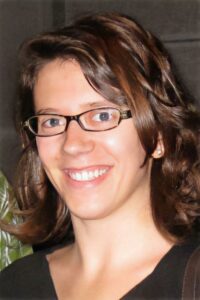
Raye FarrDirector, Steven Spielberg Film & Video Archive, U.S. Holocaust Memorial Museum
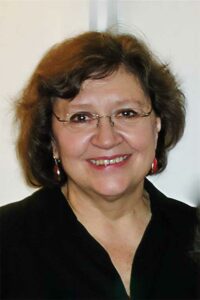
Raye Farr joined the staff of the United States Holocaust Memorial Museum after more than twenty years in documentary television production and historical film research, much of it focused on World War II and 20th century European history. Her work has been seen in many television documentary series, including:
- The Struggles for Poland
Producer, “Poland’s Jews, 1919-1943” - World at War
Producer, “Hitler’s Germany,” 3-hr special - World at War
Film Researcher, 26-hour series - China in Revolution
Archival Film Consultant, 3-hr series - Stalin
Archival Film Consultant, 3-hr series - Vietnam – a Television History
Archival Film Consultant, 13-hr series - Heritage – Civilization and the Jews
Director of Film Research, 10-hr series
In 1990, she became director of the museum’s Permanent Exhibition and led the team responsible for the micro-design and production of the museum’s major exhibition area, supervising the departments of research, design, oral history, photo and film archives, and film production. After the 1993 opening of the museum, she became director of the department of Film and Video, overseeing the establishment of the Steven Spielberg Film & Video Archive, which she directs as a branch of the Museum’s Collections Division.
Raye Farr was a co-producer of One Survivor Remembers – an HBO / USHMM production honored with a 1996 Academy Award as Best Short Documentary and a 1995 Emmy Award as Outstanding Informational Special.
She speaks fluent French and German, and has specialized in archival film history and research in film archives worldwide since graduating from Oberlin College. She lived many years in England, working at Granada Television and Thames Television.
She currently serves on the National Film Preservation Board, advising the Librarian of Congress on films to preserve as part of the nation’s heritage.
Recent productions for the United States Holocaust Memorial Museum:
The Nuremberg Trials – What is Justice?, Learning Center Exhibition, 27-minute video compilation on the IMT and 4 subsequent war crimes trials in Nuremberg, 1945-1947.
Deadly Medicine: Creating the Master Race, Special Exhibition, 5 video productions including Survivor testimony.
American Responses to the Nazi Bookburnings, Special Exhibition, 5 video productions.
Selected Publications:
“Some Reflections on Claude Lanzmann’s Approach to the Examination of the Holocaust,” in Holocaust and the Moving Image: Representations in Film and Television since 1933, Toby Haggith and Joanna Newman, editors (Wallflower, 2005).
“The Stronger the Light, the Deeper the Shadow: the United States Holocaust Memorial Museum in Washington DC,” in Die Zukunft der Vergangenheit / The Future of the Past: How should the history of the Third Reich be transmitted in museums and memorial sites in the 21st Century? (Museen der Stadt Nürnberg, 2000).
“The Use of Photographs as Artifacts and Evidence,” in Holocaust Chronicles: Individualizing the Holocaust Through Diaries and Other Contemporaneous Personal Accounts, Robert Moses Shapiro, editor (KTAV Publishing House Inc, 1999).
Selected Lectures & Conference Presentations:
“Opening the Lens, Turning a Blind Eye,” International Association for Media and History XXI Conference, 20 July 2005, Cincinnati, Ohio.
“From Here to Eternity,” Preservation of the Julien Bryan Collection, New York Film and Video Council Film Preservation Program, 29 March 2005, New York, NY.
“Rediscovering Evidence: How Do We Say What We See?” 12 November 2004, Association of Moving Image Archivists Annual Conference, Minneapolis, MN.
“Film as Propaganda, Film as Evidence, Film as Artifact – Warsaw Ghetto Footage from the Library of Congress,” Belfer Teachers Conference, 8 July 2002, Washington, DC.
“The Ethics of Using Personal Films in Public Ways,” 9 November 2001, Association of Moving Image Archivists Annual Conference, Portland, Oregon.
“The History of Traditions and Memory,” 13 April 1998, National Museum of American History’s public history lecture series, Washington DC.
“Holocaust: The Museum Audience,” 3 October 1996, The Story of the Century: An International Newsfilm Conference, London, England.
“European History in Washington DC: The United States Holocaust Memorial Museum,”
19 October 1995, The Lothian European Lectures 1995 – 96, Edinburgh, Scotland.
“The Boundaries of Memory: Creating and Shaping the United States Holocaust Memorial Museum,” 31 March 1995, Organization of American Historians, Wash. DC.
“Communicating About Difficult Issues in the Museum Environment,” 7 May 1994,
5th Annual National Museum Publishing Seminar, Washington DC.
Les WaffenChief, Motion Picture, Sound & Video Branch, U.S. National Archives & Records Administration
Leslie Waffen is Chief of the Motion Picture, Sound, and Video Branch of the Special Media Archives Services Division of the U.S. National Archives and Records Administration (NARA) in Washington, D.C. In his 40-year career at the National Archives he has served as an audiovisual archivist, audiovisual preservation specialist, and for over 25 years, as a Supervisor, Assistant Branch Chief, Media Manager, and Branch Chief of the National Archives collection of motion pictures, sound and video recordings which number over 575,000 items.
Currently he supervises a staff of 17 archivists, specialists, and technicians responsible for the acquisition, selection, and initial processing of all new accessions of audiovisual records received from U.S. government agencies and private donors, and for the preservation and cataloging of the federal agency legacy collections of obsolete and at-risk media formats entrusted to his care.
In 2006, he began to assist Sandra Schulberg on the restoration of Nuremberg: Its Lesson for Today (1948), assessing the provenance and quality of the various versions of the film in NARA’s collection, and he remained involved as a consultant through 2009, when the restoration was finally completed.
For more information about the motion picture holdings at NARA: www.archives.gov/research/formats/film-sound-video.html
Ronny LoewyProject Manager, Cinematography of the Holocaust, Fritz Bauer Institut & Deutsches Filminstitut
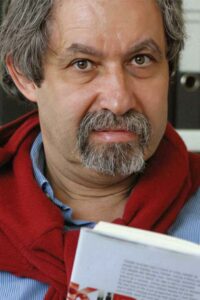
Ronny Loewy was born in Tel Aviv in 1946. He studied Sociology in Frankfurt/Main and Hannover. In 1984 he joined the staff of the German Filmmuseum, now German Film Institute/Deutsches Filminstitut in Frankfurt, where he is project manager of “Cinematography of the Holocaust,” a program that is run in cooperation with the Fritz Bauer Institute. In 1987 he was curating the exhibition “Von Babelsberg nach Hollywood. Filmemigration aus Nazideutschland” (“From Babelsberg to Hollywood. Film Emigration out of Nazi Germany”).
From 1992 to 2005 he was co-publisher of the magazine Filmexil. He has written and published extensively on cinema, on “Film in Exile,” ”Holocaust & Film”, “Yiddish Cinema”, “Stanley Kubrick”, “Max Ophüls”, “Helmar Lerski”, “Meyer Levin”, and “Victor Vicas”.
Loewy has also made films. He directed THE YIDDISH CINEMA (1983); co-directed ONCE UPON A TIME IN YIDDISHLAND (1992) with Inge Classen; AUSCHWITZ – FIVE DAYS IN NOVEMBER (1995) with Cilly Kugelmann and Hanno Loewy; and WILLI MÜNZENBERG OR THE ART OF PROPAGANDA (1996) with Alexander Bohr.
Loewy is considered one of the worldwide experts on the structure of Stuart Schulberg’s film Nuremberg: Its Lesson for Today (1948), for which he created a detailed shot list in 1998. This shot list can be found at (www.cine-holocaust.de):
He first met Sandra Schulberg in 2004, when he was asked by the Berlin Film Festival to co-present with her the original German version of the film, Nurnberg und seine Lehre, to the Berlinale audience. Later that year, during a visit to New York, he became the first scholar to examine and assess the historical importance of Stuart Schulberg’s personal Nurembergfiles. Subsequently, he alerted Raye Farr at the Holocaust Museum in Washington of the importance of the documents, and a three-way collaboration was born.
Ronny Loewy lives in Frankfurt/Main.
IN MEMORIAM: Ronny Loewy (1946-2012)
I’ll never forget when Dieter Kosslick first introduced me to Ronny Loewy in Berlin in 2004, the scholar who was acknowledged to be Germany’s foremost expert on my father’s film, NUREMBERG: ITS LESSON FOR TODAY/ NUERNBERG UND SEINE LEHRE. I thought “Who is this strange character?” And then I grew to know and love him. He taught me so much. His premature death is devastating for all of us who treasured his intellect, his insatiable curiosity, and his unique way of looking at the world. I will miss terribly his devotion to all the filmmakers whose work he cherished, elucidated and preserved — my father Stuart Schulberg and Victor Vicas among them. His passing comes as a tremendous shock. Thank goodness I interviewed him in Jerusalem in 2010, but that bit of video is a meager substitute for der wunderbarer Ronny.
— Sandra Schulberg
Ronny was a dear, supportive friend and colleague for more than 30 years. A dedicated, meticulous archivist, historian and documentarian, Ronny made tremendous contributions to our knowledge about Jewish and Holocaust cinema and rich legacy of Jewish cultural production. Ronny’s love of cinema included a deep respect for both the film materials and filmmakers. Ronnie was our primary and definitive source of information about Jewish films made in Europe during the 20th Century. His support and help in furthering the work of our National Center for Jewish Film, his wealth of knowledge and his good advice will be irreplaceable.
In the early 1980s, while at the Deutsches Filmmuseum in Frankfurt, Ronny worked closely with our National Center for Jewish film which was completing the restoration of several Yiddish films. Ronnie was the moving force behind bringing these film to Germany for the first time since before WWII. Ronny, along with Hans Peter Kochenrath, now deceased, was very instrumental in helping NCJF with the preservation of so many of the films in our collection.
Ronny’s research project “Films of the Holocaust” for the Fritz Bauer Institut in Frankfurt remains an invaluable and unparalleled resource. The culmination of a lifetime of historical research, the project includes a searchable database in German and English with information on 1,792 films referable to the Holocaust and Jewish life (including the Yiddish films). www.fritz-bauer-institut.de/cine-holocaust.html
Ronny was born in Tel Aviv in 1946. He studied Sociology in Frankfurt and Hannover. In 1984 he joined the staff of the German Film Institute in Frankfurt, where he directed the “Films of the Holocaust” program run in cooperation with the Fritz Bauer Institute.
In 1987 Ronny curated the exhibition “Von Babelsberg nach Hollywood. Filmemigration aus Nazideutschland” (“From Babelsberg to Hollywood: Film Emigration out of Nazi Germany”). From 1992 to 2005 he was co-publisher of the magazine Filmexil. He published extensively on cinema, including articles on Film in Exile, Holocaust & Film, Yiddish Cinema, Stanley Kubrick, Max Ophüls, Helmar Lerski, Meyer Levin, and Victor Vicas.
Loewy also made films. He directed THE YIDDISH CINEMA (1983); co-directed ONCE UPON A TIME IN YIDDISHLAND (1992) with Inge Classen; AUSCHWITZ – FIVE DAYS IN NOVEMBER (1995) with Cilly Kugelmann and Hanno Loewy; and WILLI MÜNZENBERG OR THE ART OF PROPAGANDA (1996) with Alexander Bohr.
Each July for more than 20 years, we would meet our friend Ronny at the Jerusalem International Film Festival, where we would debate politics and art, and we would watch movies, lots of movies. We send our condolences to his wife Gisela and his brothers Peter and Hanno Loewy loewy@jm-hohenems.at.
— Sharon Pucker Rivo & Lisa Rivo
Karin KüehnFilmarchiv der Bundesarchivs, Berlin, Germany

Karin Kühn is responsible for the acquisition of documentaries in the film branch of Germany’s federal archive in Berlin, the Bundesarchiv-Filmarchiv (BA/FA), and for the restoration of certain films. 2007, she supervised the restoration of one of the most famous films in the world — Walter Ruttmann´s Berlin. Die Sinfonie der Großstadt (1927).
In 2009, she served as one of the chief consultants on the Schulberg/Waletzky restoration of Nuremberg: Its Lesson for Today by Stuart Schulberg, which was first released in Germany in 1948 under the title Nürnberg und seine Lehre. When it became apparent that the Nuremberg materials held by the U.S. archives were too degraded for use as a restoration master, she provided the BA/FA’s fine grain master positive (also known as a “lavender print”), on loan. A new 35m negative for Nuremberg was made from this lavender print by Colorlab (located in Rockville, Maryland, near the U.S. National Archive), and then the print was returned to the Bundesarchiv.
Also in 2009, Kühn completed restoration of the 70 mm movie Flying Clipper/Traumreise unten weissen Segeln (1962), by Hermann Leitner and Rudolf Nussgruber.
For more information about the work of the Bundesarchiv-Filmarchiv: www.bundesarchiv.de
Christian DelageHistorian/Scholar
Sergei KapterevSenior Researcher Institute of Cinematic Art, Moscow
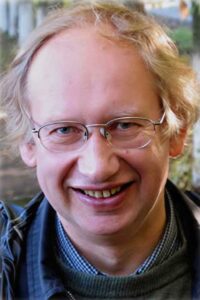
Born in Moscow in1957, Sergei Kapterev graduated from the Moscow Institute for Foreign Languages in 1980, with a diploma as a translator/interpreter. For the next 10 years he held jobs at the Novosti Press Agency and at Moscow State University (in the Psychology department).
In 1995, he moved to the United States, to enter the M.A. program in Cinema Studies at New York University’s Tisch School of the Arts. He began his doctoral studies there in 1998, and earned his Ph.D. in 2005, with a dissertation on “Post-Stalinist Cinema and the Russian Intelligentsia, 1953-1960.”
The dissertation in English is available as an on-demand publication as:
Sergei Kapterev: Post-Stalinist Cinema and the Russian Intelligentsia, 1953-1960: Strategies of Self-Representation, De-Stalinization, and the National Cultural Tradition, Saarbrücken: VDM Verlag Dr. Müller, 2008
Since 2007, he has held the position of Senior Researcher at the Institute of Cinema Art in Moscow. He specializes in the stylistic, intellectual and political interaction between American and Soviet cinemas, and is presently writing a monograph on this topic. His other research interests include film propaganda, Soviet policies in the sphere of film, cinema of the late Stalin period and the post-Stalin “thaw,” the cinema of Mikhail Kalatozov, and Russian and Soviet films in and about the Far East.
He is a member of the Toronto-based company Chemodan Films, which co-produced The Province of Lost Film and The Photographer, both in 2008.
Kapterev joined the Nuremberg research team during the final months of the restoration process. He provided information on Soviet film officers Georgii Avenarius and Yuri Viergang, both of whom where instrumental in allowing OSS officer Budd Schulberg access to captured Nazi footage that was used in The Nazi Plan and in Nuremberg: Its Lesson for Today.
Kapterev also assisted Sandra Schulberg and Josh Waletzky with the translation into English of Soviet prosecutor Roman Rudenko’s final summation at the Nuremberg trial.
He is available for research and consulting on various Soviet and Russian film topics, and may be reached via email at: skk4704@nyu.edu.
Russ SuniewickPresident, Colorlab Corp.
Colorlab created the new 35mm B&W negative for Nuremberg, using the best extant print, which was loaned to Schulberg Productions by the German Bundesarchiv.
With offices in NYC and Rockville, MD, the Archives Division at Colorlab is positioned to become the major Film Preservation facility on the East coast, performing both film-to-film preservation and film-to-tape digital mastering from the small gauge formats 8mm, super 8, and 9.5mm through 16mm, 17.5mm, 28mm, and 35mm.
Preservation clients include National Archives at College Park, US Holocaust Memorial Museum, Library of Congress, Showa-kan Film Archives (Tokyo Peace Museum), Smithsonian Institution Human Studies Film Archives, Okinawa Prefectural Archives, National Library of Ireland, Truman Presidential Library, Nixon Library, Kennedy Library, and Duke University Film Archives.
Colorlab Corp. participates annually in matching funds with film preservation services to support the efforts of the National Film Preservation Foundation, located in San Francisco. This organization supplies government funds, which partially pay for preservation efforts on culturally important non-commercial films that otherwise might vanish due to lack of resources to preserve them. Colorlab matches funds with in-kind services to achieve preserving them and thereby keeping them available for the public.
Recent commercial projects include preservation of 35mm nitrate camera originals in the Julien Bryan Collection of pre-war Eastern Europe and pre-war Japan; Claude Lanzmann’s “Shoah”; and the H. Lee Waters Collection at Duke University.
Russ Suniewick graduated in 1967 from the Eastman School of Music, University of Rochester, with a Baccalaureate of Music with Honors in Applied Music/ Clarinet Performance. He was a member of Eastman Philharmonia and Eastman Wind Ensemble, and various chamber groups.
5708 Arundel Avenue
Rockville, MD 20852
+1 301 770 2128
Irwin YoungChairman, DuArt Film & Video
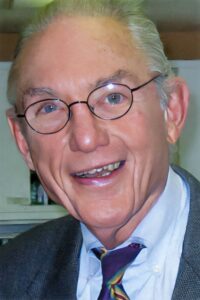
Irwin Young is Chairman of the Board of DuArt Film Laboratories and DuArt Video, Inc., in New York City, and President of Western Broadcasting WOLE (Channel 12) Aquadilla-Mayaguez, Puerto Rico.
Young’s interest in motion pictures extends to all aspects of the industry, including science, technology, and entertainment. Young also keeps his hand in the creative end of the industry. His producer credits include “Nothing But A Man”, a double prize-winner at the 1964 Venice Film Festival; “Alambrista!,” winner of the 1978 Camera d’Or at the Cannes Film Festival and of the Gran Concha de Oro at the San Sebastian Film Festival; “The Maze,” a 30-minute documentary that received the Blue Ribbon Award at the American Film Festival; and “Caught,” starring Edward James Olmos and Maria Conchita Alonso, which premiered at the Sundance Film Festival in 1996, and was released by Sony Pictures Classics. He also served as Executive Producer of “American Me,” starring Edward James Olmos, and released by Universal Studios in 1992.
Young has been with DuArt since graduating from Lehigh University in 1950. During his over 50 years in the film industry he has been the recipient of a number of awards, including the Gordon E. Sawyer Award (Oscar) from the Academy of Motion Picture Arts and Sciences, the SMPTE Progress Medal, the New York State Governor’s Arts Award, and the IFP’s first Gotham “Lifetime Achievement Award.”
He has served as President of the Film Society of Lincoln Center, Inc.; President of the Society of Motion Picture and Television Engineers (SMPTE); three-term President of the Association of Cinema and Video Laboratories (ACVL); Chairman and Board Member of the Moving Image Inc. (Film Forum, NYC); as a member of the Academy of Motion Picture Arts and Sciences Technical Achievement Awards Committee; The Colorado Council on The Arts and Humanities; and The New York State Council of the Arts.
Young is a fellow of the SMPTE, and the British Kinematograph Sound and Television Society (BKSTS), and is still a very active member of SMPTE.
DuArt’s Chairman Irwin Young, has been a longtime supporter of the Nuremberg restoration project. He first began to advise Sandra Schulberg on possible approaches to the restoration in 2004.
245 West 55th Street
New York, NY 10019
+ 1 212 757 4580
Jane TolmachyovDuArt Colorist
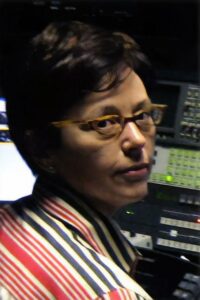
DuArt’s Jane Tolmachyov timed the high-definition digital master of Nuremberg, and also assisted with English translation of the Russian prosecutor’s summation.
David GauffDuArt Senior Editor
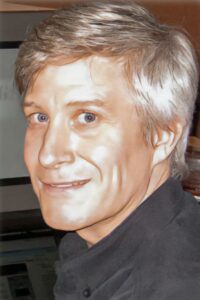
David Gauff created the digital version of the subtitles for the PAL masters of Nuremberg.
An editor, designer, compositor, artist and colorist, David Gauff is Senior Editor at DuArt Film & Video, where he has been performing Digital Intermediate conforms on the Avid DS Nitris at DuArt since 2006.
He has been finishing independent feature films, long form narrative television, and feature-length theatrical documentaries for New York City’s post production community his entire career.
Stan SztabaNegative Cutter
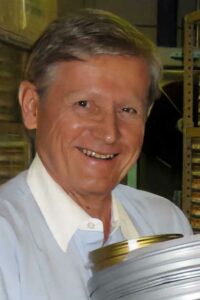
Negative Cutting (also known as Negative Matching and Negative Conforming) is the process of cutting motion picture negative to match precisely the final edit as specified by the film editor. Original camera negative (OCN) is cut and joined using a film splicer and film cement. Negative cutting is part of the post-production process and occurs after editing, and prior to striking internegatives and release prints. The process of negative cutting has changed little since the beginning of cinema in the early twentieth century.
When Schulberg and Waletzky restored Nuremberg: Its Lesson for Today in 2009, the original 1948 picture was left uncut. Negative Cutter Stan Sztaba was engaged only to cut off the original Zeit im Film distribution bumper at the head of the film, and also to join the new restoration film credits to the beginning and end of the film.
Stan Sztaba is one of the most notable men in his field. In the early 1980s computer software was first used to aid the cutting process, and a number of individual proprietary software systems were developed. Stan Sztaba developed a system for World Cinevision Services (New York) in 1983, using Apple II DOS and then PRODOS. This system is still used today.
Kodak introduced barcode on motion picture negative in the mid 1990s. This enabled negative cutters to more easily track shots and identify film sections based on keykode.
Toward the late 1990s and early 2000s negative cutting changed due to the advent of digital cinema technologies such as digital intermediate (DI), digital projection and high-definition television. Increasingly, feature films are bypassing the negative cutting process altogether and are being scanned directly from the uncut rushes.
[Portions of this description courtesy of Wikipedia]Match Cut Film Service
245 W. 55th Street
New York, NY 10019
212 265 4587
Jerome Henry RudesLVT Laser Subtitling - New York
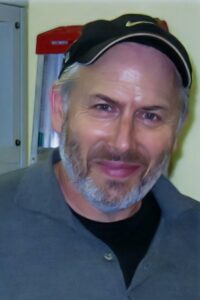
Jerome Henry Rudes serves as head of the American subsidiary of LVT Laser Subtitling of France, where he supervises the French, German and Italian subtitling of many U.S. films selected for the Cannes, Berlin and Venice film festivals. He also coordinates the English subtitling for many foreign films released theatrically in the United States.
Jerome Henry Rudes was born in San Antonio, Texas, and completed an undergraduate degree at the University of Texas, then a M.A. in film at
Northwestern University.
He began his career as a freelance journalist (TheTexas Observer), then traveled to Europe in the 70s where he worked as a teacher in international schools (Spain, Denmark, Italy). He became a translator in Spain, where he wrote his first novel, Life Script (unpublished). To support his writing, Mr. Rudes also worked as a stone mason and professional diver. Mr. Rudes’ short sojourn in Los Angeles at the beginning of the 80s was supported by writing film reviews for AvantGarde Magazine in London.
In 1982, Mr. Rudes settled in the south of France, and was appointed director of a study-abroad program at The Institute for American Universities in Avignon, France. In 1983, he founded the French-American Film Workshop with help from France’s Minister of Culture, Jack Lang, and conducted the first “Rencontres d’Avignon” in 1984, hosting filmmakers from the U.S. (among them John Sayles) and from France (among them, Agnès Varda) for a lively exchange about independent movies. He also founded the non-profit American cultural and study organization called French-American Center of Provence, with branches across the south of France (Aix-en- Provence, Lyon, Montpellier, Avignon, Marseille and Arles) which organized English language course and cultural exchange programs.
As the “Rencontres d’Avignon” grew into the Avignon Film Festival, Mr. Rudes devoted more of his time to the Festival and gradually closed all the branches of the French-American Center except for the one in Montpellier, which still flourish-
es today (www.frenchamericancenter.com). He remains President of the French-American Center of Montpellier.
In 1993 and 1994, the Harvard Film Archive invited Mr. Rudes to curate an American version of the Avignon Film Festival in Boston. The success of that venture lead to the launching in 1995 of the annual Avignon/New York Film Festival in Manhattan, which he ran for 12 years. Over the last 24 years (and 35 festivals, 23 in Avignon + 12 in New York), Mr. Rudes has hosted many estab-
lished filmmakers, including Louis Malle, Jerry Schatzberg, Roger Corman, David Brown, Curtis Hanson, Mika Kaurismaki, Claude Miller, and Paul Mazursky, as well as scores of emerging filmmakers, including Quentin Tarantino. In 2009, Mr. Rudes launched a new cinematic event, “Cinemonde.”
In 2004, AThird Face, My Tale of Writing, Fighting, and Filmmaking, written by Samuel Fuller and co-authored by Mr. Rudes and Christa Lang Fuller, was published by Knopf. Janet Maslin wrote in her review in The New York Times, “Fuller’s hot-blooded, incident-packed autobiography is a grand, lively rambunctious memoir.”
In 2005, Mr. Rudes was cast as the third lead in a Luc Besson-produced com-
edy, Au Suivant! (aka Next!), playing an American director in Paris.
Besides animating audiences with his passion for cinema, Mr. Rudes represents a number of authors, playwrights and screenwriters in America and France, through his agency, Mistral Artist Management.
Mr. Rudes lives in New York City and Avignon, France.
Victor Barbat
Yves Beigbeder
Axel Fischer
Niklas Frank
Stuart Liebman
Sylvie Lindeperg
Eli Rosenbaum
Alexander Zöller
Alberto Marquardt
Olivier Raffet
Nancy Schreiber
Marc Soupa
Laure-Alice Hervé
Jessica DiSalvo
KC Schulberg
Benn Schulberg
Fabrice Puchault
Karen Michael
Céline Nusse
Paul Rozenberg
Jean-Christophe Klotz
Budd SchulbergOSS officer in charge of compilation & editing The Nazi Plan, also writer of English inter-titles.
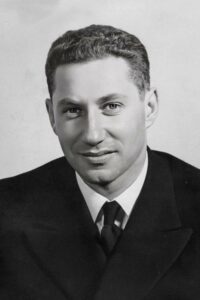
Budd Schulberg’s first novel, What Makes Sammy Run?, was published in 1941 when he was 27 years old. A daring expose of Hollywood, it became an instant classic. ‘He’s a Sammy Glick’ has entered the lexicon as a descriptor for a man of ruthless ambition.
Shortly after the attack on Pearl Harbor, Budd Schulberg put down his pen and enlisted in the Navy. He was assigned to the Field Photographic Branch of the Office of Strategic Services (OSS) in Washington. There, under the command of Navy Commodore John Ford, he made secret training films.
In 1945, Ford charged Budd and his fellow officer Ray Kellogg with responsibility for locating incriminating film evidence that could be used at the Nuremberg trial. Budd’s young brother Stuart, also attached to Budd and Ray’s team, was sent ahead to begin scouting for material.
With Kellogg handling logistics, Budd wound up supervising the editing of The Nazi Plan, for which he wrote the explanatory inter-titles, and is sometimes credited as ‘director.’ The film is a compilation of footage that had been shot and directed by German filmmakers, including Leni Riefenstahl. During the editing process, Budd apprehended Riefenstahl as a material witness, and used her to identify Nazi officers in the thousands of feet of German footage, including her own.
Budd also supervised the editing of Nazi Concentration Camps, which shocked the courtroom when it was presented one week into the trial.
At the end of 1945, Budd returned to the U.S.,was discharged, and went to work on his second novel, The Harder They Fall. It was published to great acclaim. The movie adaptation starred Humphrey Bogart, and it turned out to be Bogart’s last movie.
Budd then created the Oscar-winning screenplay On The Waterfront. It won 8 Academy Awards in all, and made a huge star of Marlon Brando.
He followed that movie with A Face in the Crowd, which made stars of Andy Griffith and Patricia Neal.
His play The Disenchanted, inspired by his collaboration with F. Scott Fitzgerald on an ill-fated Hollywood movie, also became a literary classic.
His nonfiction works include Loser and Champion: Mohammad Ali, The Four Seasons of Success; Ringside: A Treasury of Boxing Reportage; Sparring with Hemingway; and his autobiography Moving Pictures: Memories of a Hollywood Prince.
Budd Schulberg died in 2009, aged 95. He was the lone survivor of the OSS Field Photographic Branch that located the Nazi films. At the time of his death, he was collaborating with his niece, Sandra Schulberg, on a book about the Schulberg brothers’ work for the Nuremberg trial, entitled The Celluloid Noose. He was also working on a screenplay with Spike Lee about the Max Schmeling-Joe Louis fight, and trying to complete the second volume of his memoirs.
Joseph ZigmanEditor
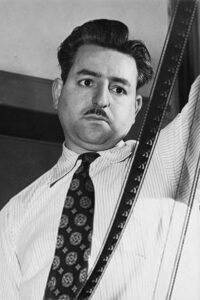
VARIETY Obituary – December 17, 1996
Joseph Zigman, 80, longtime staff director and producer for CBS in New York, who, early on in his career helped assemble the secret Nazi film footage that was later used at the Nuremberg War Crime Trials, died Dec. 1 in Oxnard following a lengthy battle with prostrate cancer.
Zigman, who served as a film editor before the start of World War II, enlisted in the U.S. Navy and later joined the OSS Film Unit, which was led by Budd Schulberg.
In 1945 Zigman and others found Nazi archival footage that was used by the Four Powers prosecution during the Nuremberg Trials.
Zigman then settled in Hollywood and served as an editor on several features before moving to New York, where he became a producer and director on numerous CBS documentaries and special reports including Roger Mudd’s Ted Kennedy interview.
Zigman worked for many years with Eric Sevareid and Chet Huntley and on the “CBS Evening News” with Walter Cronkite.
Zigman is survived by his wife, Jeanne, a son and daughter, four grandchildren and one great-granddaughter.
Pare LorentzCommissioning Editor/Producer
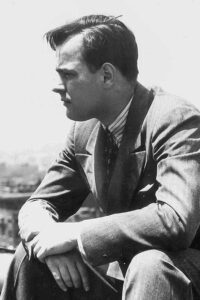
Pare Lorentz is renowned as the man who produced, wrote and directed the groundbreaking documentary films, The Plough That Broke the Plains, The River, and The Fight For Life, during the 1930’s.As these films were made under the aegis of the U.S. Department of Agriculture, with the enthusiastic support of President Roosevelt, he is sometimes referred to as ‘FDR’s Filmmaker.’
Lorentz worked tirelessly not only on making the films, but also on gaining theatrical release for them. He faced opposition at first, especially from Hollywood theatre owners who were sceptical about the appeal of documentary films to general audiences. The films proved extremely popular, however. Lorentz entertained hopes of creating a permanent government film bureau to make many more documentary films; but, despite Roosevelt’s support, his initiative failed, due to both government and Hollywood discomfort with the idea of more government-funded filmmaking.
During the war, Lorentz served as a Lieutenant Colonel in the Air Force, making navigational films and filming bombing missions. After the war, he served as chief of the Film, Theatre, Music section of the War Department’s Civil Affairs Division. When plans were developed to make a film about the Nuremberg Trial, Lorentz took charge on behalf of the War Department. He faced tremendous opposition from General Lucius Clay’s Military Government staff, headquartered in Berlin, who argued that they should control the making of the film.
Lorentz eventually managed to impose Stuart Schulberg, his choice of the man to write and produce Nuremberg, and sent him to Berlin to carry out the job. Lorentz faced bureaucratic and funding challenges throughout the time that Schulberg worked on the film in Berlin, and eventually resigned from the project and from the War Department in frustration in May 1947, a year before the film was completed.
Two years later, when he realized the War Department was quashing the film’s release in the United States, he appealed to government officials for permission to purchase and release the film himself. His offer was refused. He never made another film.
Pare Lorentz died in 1992, at age 87.
Eric PommerChief, Motion Picture Branch, Office of Military Government, U.S.
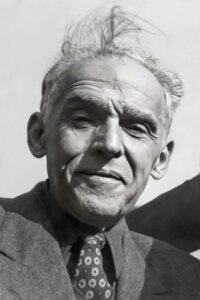
When Pare Lorentz resigned from the War Department in mid-1947, Eric Pommer took over responsibility for supervising the completion of Nuremberg. One of Germany’s most famous producers, he had left Germany in 1933, and only returned in 1946. As chief of the Motion Picture Branch for Military Government from 1946-1949, he was Schulberg’s superior officer. The records show that he was regularly consulted during the final months of the production. The two men became close friends.
For more information about the life and career of Eric Pommer, read From Calgari to California – Eric Pommer’s Life in the International Film Wars by Ursula Hardt.
The following biography is courtesy of Wikipedia:
Erich Pommer (July 20, 1889 – May 8, 1966) was one of the most influential producers of the silent film era, having been one of the most influential creators behind the German Expressionism movement as the head of production at Ufa from 1924 to 1926. Under his guidance, many of what critics consider the greatest movies ever made were directed, such as The Cabinet of Dr. Caligari (1920), Dr. Mabuse, the Gambler (1922), Die Nibelungen (1924), Mikaël (1924), Der Letzte Mann/The Last Laugh (1924), Variety (1925), Tartuffe (1926), Faust (1926), Metropolis (1927) and The Blue Angel (1930).
Pommer was born in Hildesheim, Province of Hanover, to Gustav Pommer and his wife Anna. After a commercial practice with the Herrenkonfektion Machol & Lewin, Pommer begins his film career in 1907, with the Berlin branch of the Gaumont company, where he fulfills different functions, eventually taking over the Viennese branch in 1910. In 1912, Pommer concludes his military service and joins the competition: he becomes a representative of the “Film und Kinematographen GmbH Eclair”, also a French company, in Vienna, where he is responsible for Central and Eastern Europe. From 1913, he becomes the general representative of the Eclair for Central Europe, Denmark, Sweden, Norway and Poland, based out of Berlin. In the same year, he marries Gertrud Levy and becomes, together with Marcel Vandal, the director-general of Eclair, the Viennese author film company. Under Pommer’s direction, the company begins the production of features for the Viennese Eclair. The film “Das Geheimnis der Lüfte / Le mystère de l’air” (in English, the “Mystery of the Air”) is released. Another 5 films will follow in 1915.
With the French capital from Eclair and together with Fritz Holz, Pommer sets up in 1915 the Decla-Film-Gesellschaft-Holz & Co.(Decla Film Society Holz & Co.), in Berlin. The Decla (“German Eclair”) produces adventure and detective films, drama, and society pieces, as well as short film series. Its own Decla rental business, led by Hermann Saklikower, also presents foreign films. Pommer serves in the First World War at the West and East fronts; injuries bring him back to Berlin in 1916, where he becomes active first recruiting teachers, then for the Office for Film and Picture (Bufa). After the 1919 merger of Decla with the Meinert-Film-Gesellschaft, Rudolf Meinert leads production and Erich Pommer takes charge of the representation abroad. Decla production becomes more ambitious. The brands “Decla Abenteuerklasse” (producing, among others, Fritz Lang’s The Spiders, Part 2: The Diamond Ship) and “Decla Weltklasse” (e.g. producing The Cabinet of Dr. Caligari, under the direction of Robert Wiene) appear. In an interview in 1922, Pommer will state the international success of the German film would have to be linked to quality pictures. The international success of “Dr. Caligari” seemed poised to confirm it.
Decla merges with German Bioskop AG to create the Decla Bioskop AG, thus becoming in 1920 the second largest German film company after the Ufa. It now owns a studio in Neubabelsberg and its own cinema chain. Two subsidiaries are created: Uco-Film GmbH and Russo Films. The Uco film GmbH, in whose establishment the Ullstein publishing house is involved, dedicates itself to filming continuation novels. Schloß Vogeloed-Die Enthüllung eines Geheimnisses/The Haunted Castle and Phantom, under the direction of Friedrich Wilhelm Murnau, as well as Fritz Lang’s Dr. Mabuse, the Gambler, are released. Adaptation of works of the world literature is the focus on Russo Films.
Pommer gathers around him a successful team of directors (F. W. Murnau, Fritz Lang, Robert Wiene, Carl Froelich, Fritz Wendhausen), film script writers (Thea von Harbou, Carl Mayer, Robert Liebmann), cameramen (Karl Freund, Carl Hoffmann, Willy Hameister), architects (Walter Roehrig and Robert Herlth), as well as actors and actresses. In November 1921, the Decla Bioskop transfer to the Ufa, although it will maintain a modicum of independence.
In early 1923, Erich Pommer joins the Ufa executive committee, to oversee the Decla Bioskop operations. At the same time, he becomes the first chairman of the Central Organization of the Film Industry (SPIO), which will shape the film history of the Weimar Republic. The German galoping inflation makes complex productions possible: in that time some “classical authors” are turned into movies, and expensive and internationally successful large films like Der letzte Mann/The Last Laugh, Faust, Manon Lescaut or Variety are released. High production costs lead Ufa to a heavy financial crisis. Finally, due to the enormous cost increase of Metropolis (6 million marks, the most expensive to date at that time) the Pommer contract is not extended.
Pommer goes into the USA and works for Paramount Pictures as producer for two Pola Negri films, Hotel Imperial and Barbed Wire. After a short intermezzo at MGM, Ufa gets him back (1927). From the USA, Pommer brought organizational and technical novelties, such as the use of turning plans or of camera crane cars. As producer of the “Erich-Pommer-Produktion der Ufa” (Erich Pommer production of the Ufa), he celebrates 1928 with Homecoming and Ungarische Rhapsodie/Hungarian Rhapsody. Pommer is a pioneer of the language versions: His Melodie des Herzens/Melody of the Heart, produced at the end of 1929 in Berlin, is produced in an English, a French, a Hungarian as well as a silent version. The film becomes a world success. The “Erich-Pommer-Produktion der Ufa” turns several box office hits in the following years, such as Josef von Sternberg’sThe Blue Angel in 1930, starring Marlene Dietrich.
In the course of the “Arisierung”, the Ufa resolves the contract with Erich Pommer in 1933. At the height of his career, Pommer goes into exile. He works for Fox Film Corporation, first in Paris, where he produces Max Ophüls’ On a volé un homme and Fritz Lang’s Liliom, then in Hollywood. In 1936, he produces for Alexander Korda in England. In the next year he creates a production company, the Mayflower Picture Corp., with Charles Laughton, whose first film, The Vessel Of Wrath/The Beachcomber, will also be directed by Pommer (his only attempt at direction). In 1938, he produces Sidewalks of London by Tim Whelan (also starring Laughton and Vivien Leigh) and in 1939 he produces Alfred Hitchcock’s Jamaica Inn.
The political situation in Europe deteriorates and Pommer signs in 1939 with the RKO Radio Pictures, in Hollywood, for whom he’ll produce two pictures. When World War II breaks out, he is in New York and decides to stay in the USA. Becoming seriously ill in 1941 (he suffers a heart attack), his contract with RKO isn’t renewed. Pommer gets into financial difficulties: he and his wife resort to working in a porcelain factory. In 1944, Pommer gets the American nationality.
In 1946, Pommer returns to Germany, where he becomes the highest-ranking film officer of the American military Government for the reorganisation of the German film production (e.g., reconstruction of studios, assignment of production licenses). After some controversy, in 1949 Pommer lays down his office and returns to the USA. He attempts to launch Signature Pictures to produce German-American films, an endeavor that fails.
In 1951 he starts the “Intercontinental Film GmbH” in Munich, where he makes some remarkable movies: Nachts auf den Strassen (1951) and Kinder, Mütter und ein General (1955). However, restrictions forced upon him lead to his return to California. Physically badly shaken – a leg is amputated and he is confined to a wheelchair – his career as a producer ends.
In 1966, he died in Los Angeles, California.
Awards
- 1953 German Film Award for “Nachts auf den Strassen”.
- 1955 Golden Globe Award for Best Picture for “Kinder, Muetter, und ein General”.
- 1956 Gran-Prix de l’Union de la Critique de Cinéma (UCC) for “Kinder, Muetter, und ein General”.
Hans-Otto BorgmannComposer
In 1948, Hans-Otto Borgmann composed the score for Nuremberg: Its Lesson for Today. Fifteen years earlier, he had composed the music for a Nazi propaganda film, Hitlerjunge Quex. One of his songs from the film – Unsere Fahne flattert uns voran, with lyrics adapted from a text by Baldur von Schirach, one of the Nuremberg defendants – became the official anthem of the Hitler Youth. Borgmann’s apparent ties to the Nazi Party stunned Schulberg and Waletzky. How could he have been cleared to work on Nuremberg?
Bundesarchiv researcher Babette Heusterberg helped to fill in the blanks. Although Borgmann had been a member of National-sozialistische Betriebszellenorganisation (NSBO), the Kampfbund für deutsche Kultur (KfdK), and the Reichsfilmkammer, there was no evidence of his membership in the Nazi Party (NSDAP). According to records she found, Borgmann was interviewed by the Office of Military Government, Information Control Branch, in Berlin on October 20, 1946, and barred from all cultural activities. He waited some months before filing for an employment permit again, citing a possible job offer from Eric Pommer, chief of the OMGUS Motion Picture Branch. As Borgmann had been music director at Berlin’s UFA film studio from 1931, while Eric Pommer was the top movie producer there, they would have worked together before the war. The files show that Borgmann’s case was reconsidered on September 5, 1947. By then, the U.S. Army had no objection to his employment in the U.S. Sector, and reclassified him. He had his Persilschein.
(Persil was the name of a popular laundry detergent in Germany. Persilschein entered the postwar vocabulary as a slang term to mean a denazification certificate or work permit issued by the occupying governments. In political terms, it signified a clean bill of health, but could also mean a whitewash.)
Borgmann’s German biography, below, is courtesy of Wikipedia:
Hans-Otto Paul Friedrich Borgmann (* 20. Oktober 1901 in Hannover-Linden; † 26. Juli 1977 in Berlin) war ein deutscher Filmkomponist.
Der Sohn eines Oberregierungsrates lernte in seiner Kindheit Klavier, Violine und Orgel. Sechzehnjährig arbeitete er bereits als Organist an der Schlosskirche vonSchloss Gottorf bei Schleswig. 1910 bis 1919 besuchte er das Humanistische Domgymnasium Schleswig und studierte 1920 bis 1922 an der Staatlichen Akademie für Kirchen- und Schulmusik in Berlin. Hier ließ er sich zum Musiklehrer, Organisten, Chorleiter und Kapellmeister ausbilden.
Von 1924 bis 1927 wirkte Borgmann als Theater- und Opernkapellmeister. Auch später komponierte er Bühnenmusik, insbesondere für das Deutsche Theater Berlin. Sein Filmschaffen begann, als er ab 1928 als Kapellmeister für die musikalische Untermalung von Stummfilmen sorgte. Danach wurde er Musikassistent und war ab 1931 musikalischer Leiter der UFA und Filmkomponist.
Im Jahre 1933 komponierte er die Filmmusik zu dem NS-Propagandafilm Hitlerjunge Quex. Das von Borgmann komponierte HJ-Lied Unsere Fahne flattert uns voran auf einen Text des „Reichsjugendführers“ der NSDAP Baldur von Schirach zog sich als Leitmotiv durch den Film und wurde zur Hymne der Hitler-Jugend.
Ab 1937 arbeitete Borgmann häufig für Veit Harlan. Er benutzte intensiv die Technik des Leitmotivs, das er bestimmten Filmfiguren zuordnete und je nach Situation abwandelte. Sein eingängigster Filmschlager wurde 1937 Tango Notturno aus dem gleichnamigen Film mit Pola Negri.
Nachdem Borgmann 1938 eine Großdeutsche Hymne auf einen Text von Baldur von Schirach vertont hatte, wurde er Leiter der Abteilung Musik der neu eröffnetenDeutschen Filmakademie und erhielt den Titel Professor.
Nach dem Ende des Zweiten Weltkriegs dirigierte er im August 1945 am Berliner Hebbel-Theater Brecht/Weills Dreigroschenoper. Daneben komponierte Borgmann zunächst weitere Filmmusiken: 1946 für eine Dokumentation über die Nürnberger Kriegsverbrecherprozesse (Nürnberg und seine Lehren), in den 1950er Jahren für diverse Streifen vorwiegend rührseligen Inhalts. Später wandte sich Borgmann zunehmend der atonalen Musik zu. Ab 1953 war er Leiter der Landesgruppe Berlin des Deutschen Komponistenverbandes. Von 1959 bis 1971 unterrichtete er als Dozent, seit 1970 als Honorarprofessor für Bühnenlied und literarischen Chanson an der Staatlichen Hochschule für Musik und Darstellende Kunst Berlin. In dieser Zeit komponierte er etwa siebzig Bühnenlieder und Chansons nach Texten von Bertolt Brecht, Erich Kästner, Joachim Ringelnatz und Kurt Tucholsky.
Filmografie
- 1931: Nie wieder Liebe (musikalische Leitung)
- 1931: Sein Scheidungsgrund (musikalische Leitung)
- 1931: Der Hochtourist (musikalische Leitung)
- 1932: Der Frechdachs (musikalische Leitung)
- 1932: Ein toller Einfall (musikalische Leitung)
- 1932: Quick
- 1932: Mensch ohne Namen (musikalische Leitung)
- 1932: Das schöne Abenteuer (musikalische Leitung)
- 1932: Strich durch die Rechnung
- 1932: Der weiße Dämon
- 1932: Wenn die Liebe Mode macht
- 1932: F.P.1 antwortet nicht (musikalische Leitung)
- 1932: Eine Tür geht auf
- 1933: Lachende Erben (musikalische Leitung)
- 1933: Kind, ich freu’ mich auf Dein Kommen
- 1933: Der Stern von Valencia (musikalische Leitung)
- 1933: Ein gewisser Herr Gran (musikalische Leitung)
- 1933: Alles für Anita
- 1933: Hitlerjunge Quex
- 1933: Die schönen Tage von Aranjuez
- 1933: Heideschulmeister Uwe Karsten
- 1933: Inge und die Millionen (Musikbearbeitung)
- 1934: Gold
- 1934: Die Csardasfürstin (Musikbearbeitung)
- 1934: Ein Mann will nach Deutschland
- 1934: Die Insel (musikalische Leitung)
- 1934: Fürst Woronzeff
- 1935: Die törichte Jungfrau
- 1935: Barcarole
- 1935: Das Mädchen vom Moorhof
- 1935: Leichte Kavallerie
- 1935: Liebeslied
- 1936: Mädchenjahre einer Königin
- 1936: Moskau – Shanghai
- 1936: Die Nacht mit dem Kaiser
- 1937: Gleisdreieck
- 1937: Tango Notturno
- 1938: Jugend
- 1938: Verwehte Spuren
- 1939: Ein hoffnungsloser Fall
- 1939: Pedro soll hängen (Uraufführung 1941)
- 1939: Die Reise nach Tilsit
- 1940: Unser Fräulein Doktor
- 1940-42: Der große König
- 1941: Jakko
- 1942: Die goldene Stadt
- 1942: Der große Schatten
- 1942: Diesel
- 1942-44: Opfergang (Uraufführung 1953)
- 1943: Du gehörst zu mir
- 1944: Familie Buchholz
- 1944: Neigungsehe
- 1944: Der Majoratsherr
- 1944: Junge Adler
- 1945: Die Brüder Noltenius
- 1945: Wie sagen wir es unseren Kindern? / Ehe mit Hindernissen (Uraufführung 1952)
- 1945: Eine alltägliche Geschichte (Uraufführung 1948)
- 1948: 1-2-3 Corona (einschließlich der Liedtexte)
- 1948: Schuld allein ist der Wein
- 1949: Der große Mandarin
- 1949: Verführte Hände
- 1950: Nur eine Nacht
- 1950: Das Mädchen aus der Südsee
- 1950: Die tödlichen Träume / Liebestraum
- 1951: Hanna Amon
- 1952: Praterherzen / Tingeltangel
- 1953: Der Kapitän von San Lorenzo / Mea culpa
- 1953: Die Stärkere
- 1953: Die Prinzessin und der Schweinehirt
- 1954: Konsul Strotthoff
- 1955: Die Toteninsel
- 1955: Vor Gott und den Menschen
- 1956: Dany, bitte schreiben Sie
- 1956: Von der Liebe besiegt / Schicksal am Matterhorn
- 1958: Man müßte noch mal zwanzig sein
- 1961: Die kleinen Füchse (TV)
Andere Kompositionen
- Little Caprice (1962) für Orchester
- Petite Promenade (1962) für Orchester
Literatur
- Frank Noack: Hans-Otto Borgmann; in CineGraph Lg. 26 (1995), edition text+kritik
- Jürgen Wölfer, Roland Löper: Das große Lexikon der Filmkomponisten, Verlag Schwarzkopf und Schwarzkopf, Berlin 2003 ISBN 3896022962